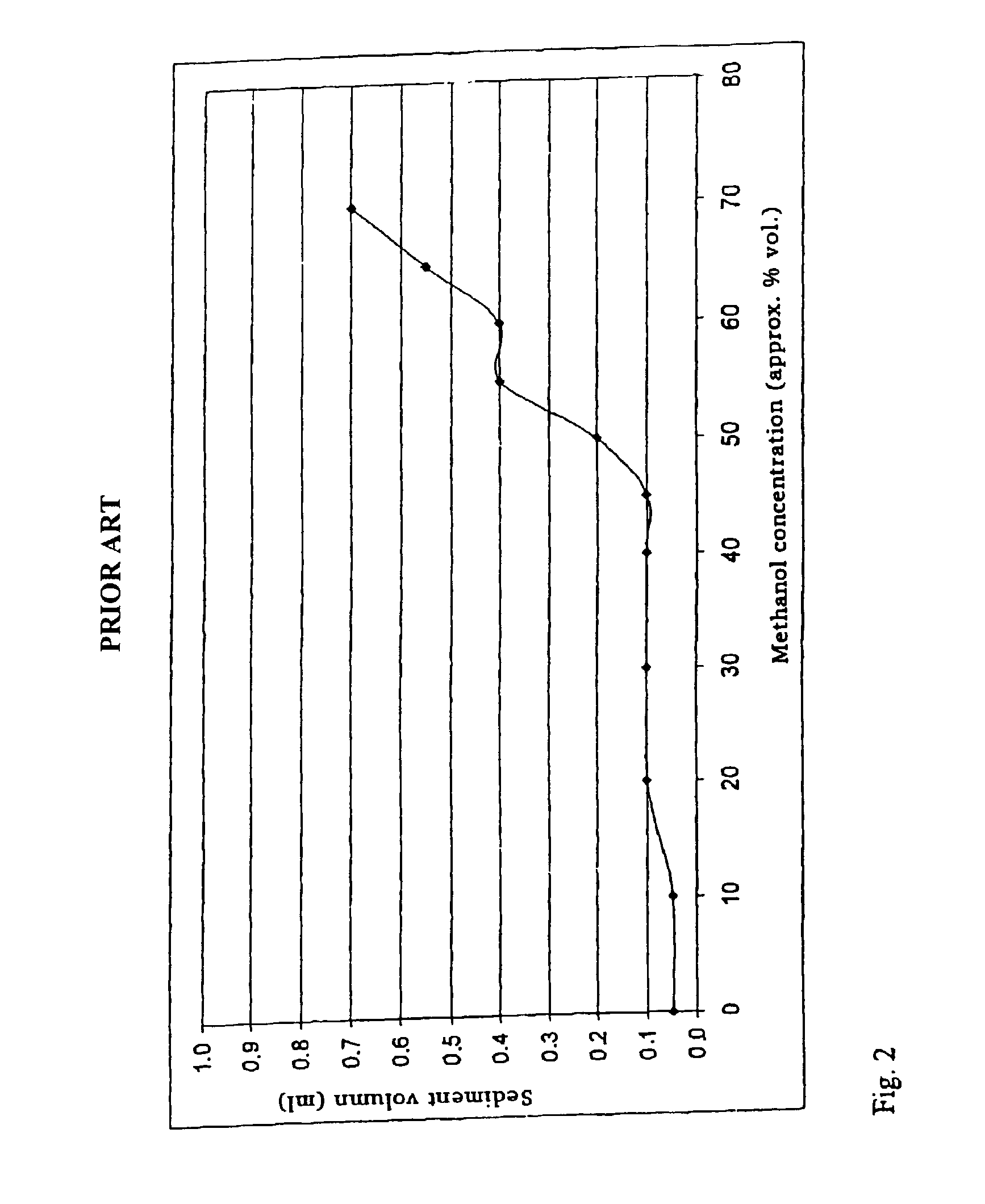High-whiteness hydrophobic precipitated silica with ultralow moisture absorption
a precipitation silica and hydrophobic technology, applied in the field of hydrophobic precipitated silica, can solve the problems of limited amount of hydrophobicizer covalently attached to the silica, the discoloration of the precipitated silica is particularly inconvenient, and the hydrophobic silica thus hydrophobicized becomes discolored at the required process temperature, etc., to achieve low water absorption, low friction, and high covalently attached carbon loading
- Summary
- Abstract
- Description
- Claims
- Application Information
AI Technical Summary
Benefits of technology
Problems solved by technology
Method used
Image
Examples
example 1
[0262]50.0 m3 of water are charged to a reaction vessel. Slowly, 9.2 m3 of waterglass solution and 0.9 m3 of H2SO4 are added with stirring to the initial charge, an alkaline pH being maintained in the mixture during the addition. After the end of the addition of waterglass and H2SO4, the pH of the resulting suspension is within the alkaline range. The suspension is acidified and filtered, and the solid product is washed with deionized water. The hydrophilic base silica can be dried, preferably by an accelerated drying method. The following data relate to the dried precipitated silica thus obtained.
[0263]
BET surface area (m2 / g)150–170CTAB surface area (m2 / g)150–170Loss on ignition based on the substance dried 2 h / 105° C.3 ± 0.5(DIN 55921) (%)pH 5% (methanol / aqueous solution) (DIN 53200) 6–7Conductivity (in 5% aqueous dispersion) (μS)Tapped density (g / l)>250Sears number
example 2
[0264]The hydrophobic base silica was coated dry with silicone oil (methyl-terminated polydimethylsiloxane, viscosity 50 Pas, e.g., DOW CORNING (R) 200 FLUID 50 CS, carbon content about 33%) and conditioned by aging at room temperature for more than 48 hours (3 days) until it had obtained a methanol wettability of at least 20%. The material is heat-treated under oxidizing conditions in a muffle furnace with a bed height of not more than 2 m at a temperature above 330–360° C. for 1 h. The analytical data of the resulting material are given in Table 1.1.
[0265]
TABLE 1.1Product data, oxidatively heat-treatedWater%1.1Loss on ignition4.3N2 surface aream2 / g89pH7.9ConductivityμS40DBP%189C content%3.9Reflectance%95Methanol wettability%67
example 3
[0266]The base silica is coated with silicone oil (methyl-terminated dimethylpolysiloxane, 50 Pas, e.g. DOW CORNING (R) 200 FLUID 50 CS, carbon content approximately 33%) in a Gericke mixer in a mass ratio of 1:1. The resulting powder is conditioned for an hour at a temperature of 105° C. This produces a material in which, although it is wettable by water, the silica and silicone oil can no longer be separated from one another in water. Mixing of this masterbatch with filtercakes of the base silica produces stable formulations in which the silicone oil no longer separates from the hydrophilic filtercake. A hydrophobic masterbatch and a hydrophilic filtercake thus prepared (solids content about 20%) are conveyed together into the spin-flash drier, in which they are mixed (in a mass ratio of about 1:12) and dried. The dimethylsiloxane-treated silica is conditioned by aging at room temperature for at least 48 hours (about 3 days) until it has attained a methanol wettability of at least...
PUM
| Property | Measurement | Unit |
|---|---|---|
| water content | aaaaa | aaaaa |
| temperatures | aaaaa | aaaaa |
| temperatures | aaaaa | aaaaa |
Abstract
Description
Claims
Application Information
 Login to View More
Login to View More - R&D
- Intellectual Property
- Life Sciences
- Materials
- Tech Scout
- Unparalleled Data Quality
- Higher Quality Content
- 60% Fewer Hallucinations
Browse by: Latest US Patents, China's latest patents, Technical Efficacy Thesaurus, Application Domain, Technology Topic, Popular Technical Reports.
© 2025 PatSnap. All rights reserved.Legal|Privacy policy|Modern Slavery Act Transparency Statement|Sitemap|About US| Contact US: help@patsnap.com



